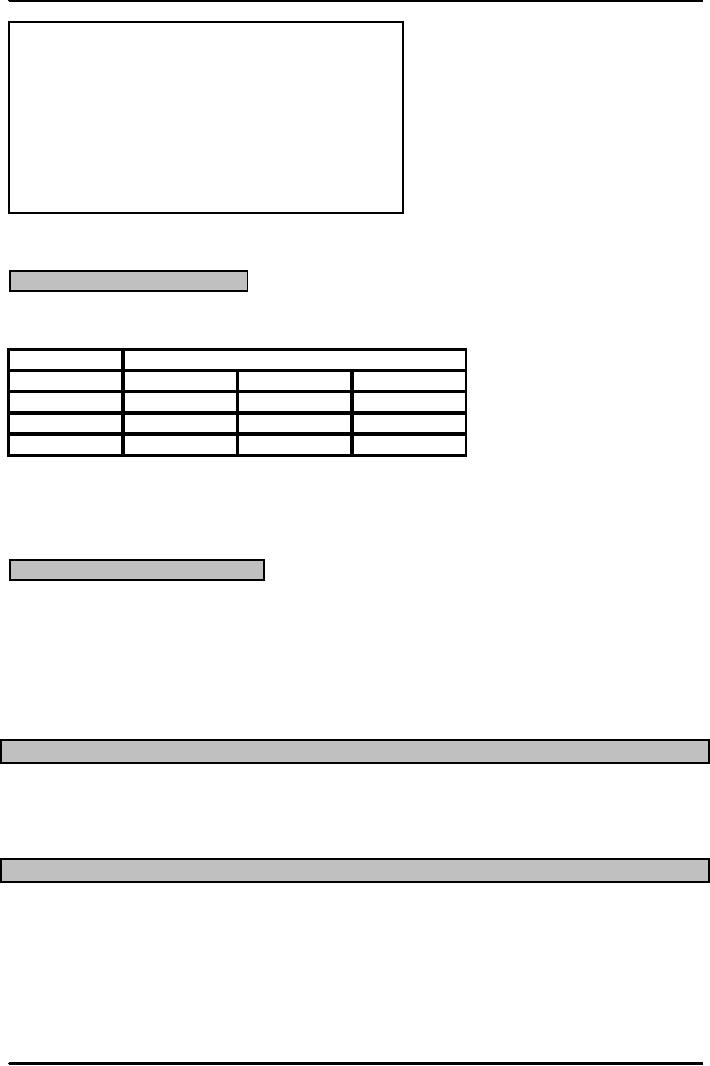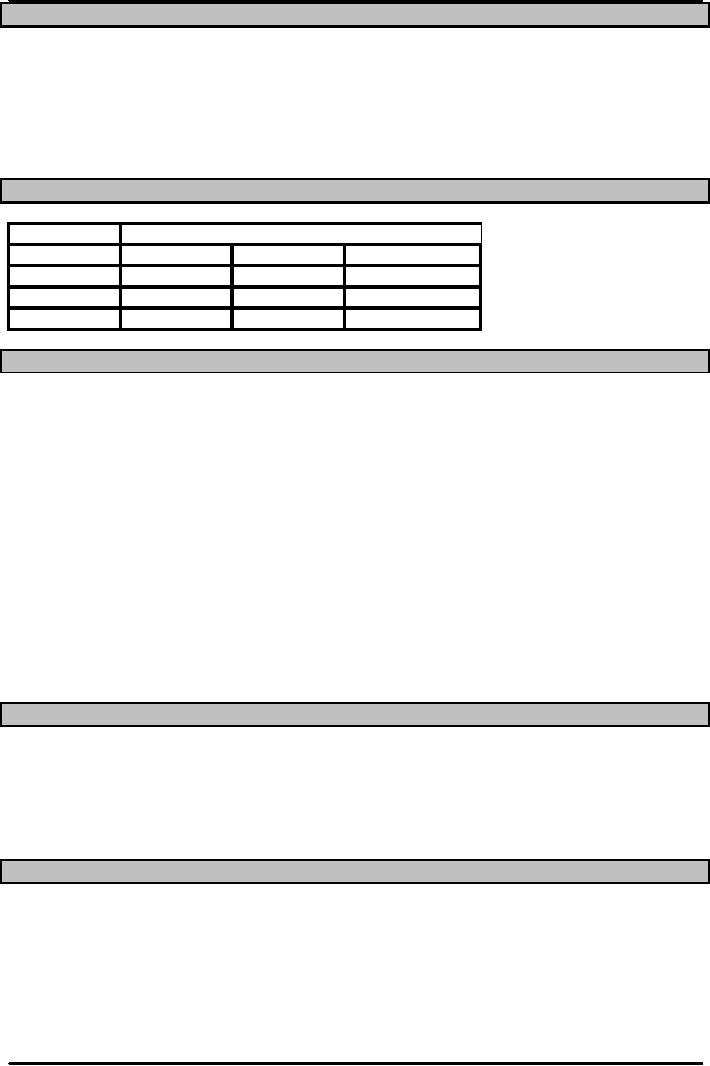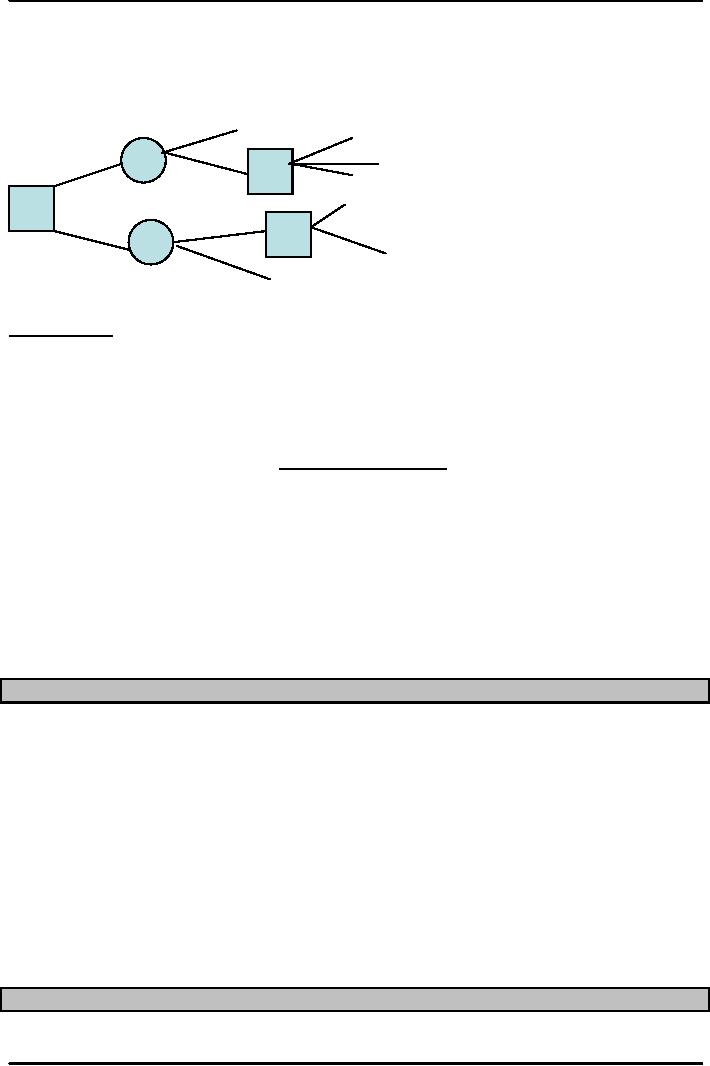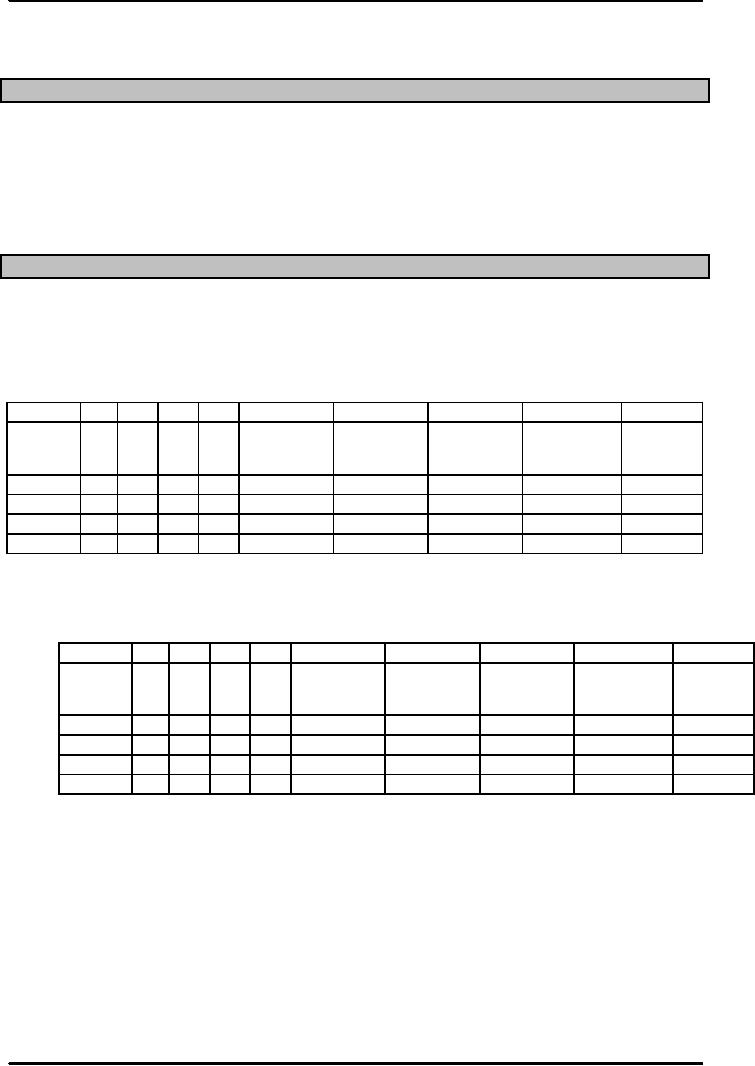 |

Production
and Operations Management
MGT613
VU
Lesson
06
The
Decision Process
Decision
Process is more or less the fundamental
process of Management. Whether a
person works in a
manufacturing
organization or a services side
organization, he or she would be
asked to carry out
the
decision
process. Normally the decision
making process involves the
following six important
steps
1.
Specify Objectives and the Criteria
for decision making
2.
Develop Alternatives
3.
Analyze and compare
alternatives.
4.
Select the best
alternative.
5.
Implement the chosen
Alternative
6.
Monitor the results to ensure the desired
results are achieved.
Operations
Manager identifies the criteria by
which the proposed solutions will be
judged. The common
criteria
often relates to costs,
profits, return on investment,
productivity, risk, company image, impact
on
demand,
or similar variables. The
management is interested that the
Operations Manager should be
able
to
focus on parameters that will
increase or decrease? Ideally the
aim is that
1.
Costs should decrease and
Profits should
increase
2.
Return on Investment should
increase along with increase
in Productivity.
3.
Risk should decrease along
with increase in Company
image.
4.
Demand should increase for the
product or service.
5.
Monitor the results to ensure the desired
results are achieved.
The
Decision Process
Example
The
CEO of ABC Corporation has
asked you (the VP Operations) to
help the BOD reach a
decision
whether
to introduce a new automobile
model. The new model
would have the following effects
on
important
decision making process.
Certain Parameters will
increase and decrease?
Costs
decrease by 15 %
Profits
increase by 2%
Return
on Investment stays the
same
Productivity
decreases by 5%
Risk
increases by 5 %
Company
image may increase or
decrease
Demand
may increase or decrease for
the product or service.
Solution
�Based
on the above data, a Risk Averse
Manager would forego the new
project, A Risk taker would
go
for
it. These factors alone do
not present the overall big
picture, most of the times in practical
situations,
the
decision is based upon
important factors like ROI,
Productivity, Utilization of available
resources,
Profits
and Costs in line with
organizations operational and
organizational strategy and the mapping
of
the
organization with respect to
its competitors and competitive
environment..
Causes
of Poor Decisions
�Unforeseeable
and uncertain circumstances , which in
reality refers to a mistake or error in the
decision
making,
remedial action is to have a STEERING
COMMETIEE ( comprising of senior
management) to
review
the whole process and monitor the
decision steps.
Decision
Environments
�There
are three degrees of Certainty,
Risk and Uncertainty.
24

Production
and Operations Management
MGT613
VU
1.
Certainty: Means that the
relevant parameter such as
costs, capacity and demand have
known
values.
2.
Risk means that certain
parameters have probabilistic
outcomes.
3.
Uncertainty means that the
certain parameters have various possible
future events.
Decision
Environments often represent
the same three scenarios of
Certainty, Risk and
Uncertainty. Let
us
consider the example where we are making
a ball bearing which is to be
used in ceiling fan and
our
marketing
department comes with up three scenarios
with different set of
numbers. It costs us Rs 40 per
unit
to manufacture the ball bearing. The
marketing department has through
its market research
noted
that
our organization can have a
sale price of Rs. 90 per
unit.
�Certainty:
Profit per unit is Rs. 50.
You have an order for 2000
units. The decision is under
certainty as
the
Means that the relevant
parameter such as costs,
capacity and demand have known
values.
�Risk
There is a 25 % chance of demand of
2000 units, 50% chance of
demand of 1000 units and 25
%
chance
of an order of 500
units.
�Uncertainty
.There is no available data of
demand forecasts means that
the certain parameters
necessary
for decision making are
absent.
DECISION
THEORY
No
discussion in Production Operation
Management is complete without making a
reference to
Decision
Theory. Decision Theory is in
fact a general approach to decision
making.
Decision
theory consists of the following three
elements.
1.
A set of possible outcomes exist
that will have a bearing on the
results of the decision.
2.
A list of alternatives to choose
from.
3.
A known payoff for each
alternative under each possible
future condition.
An
operations manager would need to
develop an understanding of decision
theory knowledge and
needs
to employ the following.
1.
Identify a set of possible future
conditions called state of nature
which includes the low,
high,
medium
demand pattern and a working on the
competitor's introduction of new
product.
2.
Develop a list of alternatives, one of
which may be to do
nothing.
3.
Determine or estimate the payoff
associated with each
alternative for every possible
future
condition.
4.
If possible estimate the likely hood of
each possible future
condition.
5.
Evaluate alternatives according to
some decision criterion e.g.
maximize expected profit
and
select
the best alternatives to choose
from.
PAY
OFF TABLE
�Payoff
table summarizes the
information of a decision and captures
the expected payoffs under
various
possible
states of nature.
�Let
us consider an example, we are setting up
a pharmaceutical factory and our
state of nature indicates
that
If we built a small facility the
return remains the same
whether the demand is low or
high, the
medium
facility indicates a constant return on
moderate and high. If we
build a large facility
chances are
that
the return would only be
good if we have a high demand or
return.
25

Production
and Operations Management
MGT613
VU
Alternatives
Possible Future Demands
Low
Moderate
High
Small
Rs.
10 M
Rs.
10 M
Rs.
10 M
Facility
Medium
Rs.
5 M
Rs.
8 M
Rs.
12 M
Large
Rs.
1 M
Rs.
2 M
Rs.
15 M
The
states of nature are very
important, for our decision
making.
Decision
Making under Certainty
Decision
making under certainly is
always simple but never
available to the managers.
Alternatives
Possible
Future Demands
Low
Moderate
High
Small
Facility
Rs.
10 M
Rs.
10 M
Rs.
10 M
Medium
Rs.
5 M
Rs.
8 M
Rs.
12 M
Large
Rs.
1 M
Rs.
2 M
Rs.
15 M
Decision
Making under
Certainty
�It is
known with certainty that
the demand will be low,
moderate and high.
�In the
example, we just select the
best or highest payoff for
all the states of nature.
Decision
Making under Uncertainty
�In the
absence of clear information, An Operations
Manager would need to
carryout decision making
under
uncertainty. This is the usual pattern
when managers working at
assembly plants, services,
oil
refineries
or chemical processing plant end up
facing a dilemma to evaluate the
alternative of payoffs..
1.
Maximin
2.
Maximax
3.
Minimax Regret
4.
Laplace
MAXIMIN
Maximin
determines the worst payoff for
each alternative; the operations manager
chooses the best
worst
alternative. Meaning the least (best) of
the worst.
It
is a pessimistic approach.
Ensures
a guaranteed minimum.
MAXIMAX
Maximax
determines
the
best possible outcome
Choose
the Alternative with the best possible
payoff.
It
does not take into
account any other
alternative then the best
payoff.
An
optimistic approach.
Go
for it strategy.
26

Production
and Operations Management
MGT613
VU
LAPLACE
Determines
the Average payoff for
each alternative
And
chooses the alternative with the
best average.
This
is a cautious approach
Laplace
approach treats the states of nature as
equally likely.
Example
to calculate Maximin, Maximax and
Laplace
Alternatives
Possible
Future Demands
Low
Moderate
High
Small
Facility
Rs.
10 M
Rs.
10 M
Rs.
10 M
Medium
Rs.
5 M
Rs.
8 M
Rs.
12 M
Large
Rs.
1 M
Rs.
2 M
Rs.
15 M
Example
to calculate Maximin, Maximax and
Laplace
Maximin
, the worst payoff for
alternatives
Pick
the Minimum (Least) of the
maximum
Small
Facility Rs 10 M since the payoff
table shows that
Small
Facility
Rs.
10 M
Medium
Rs.
12 M
Large
Rs.
15 M
Example
to calculate Maximin, Maximax and
Laplace
Laplace
, the best payoff of the average
for each alternatives
Small
Facility Rs 10 M since the payoff
table shows that
Small
Facility
Rs.
30/3= Rs. 10 M
Medium
Rs.
25/3= Rs. 8.33 M
Large
Rs.
18/3= Rs. 6 M
Decision
Making under
Uncertainty
Minimax
Regret
Determines
the worst regret for each
alternative
Chooses
the alternative with the best
worst.
This
approach seeks to minimize the difference
between payoff that is realized
and best payoff
for
each
state of nature.
Example
to calculate Minimax Regret
�Minimax
Regret ,
�Step
I ; Construct the Table of Opportunity
Losses or Regrets.
Subtract the
column entries by subtracting the entry
from that of the highest
column value
Repeat
the process for all columns
�Step
II. Select the maximum regret value of
each row ( alternative
meaning
small, medium and
large
scale)
27

Production
and Operations Management
MGT613
VU
Example
to calculate Minimax Regret
Alternatives
Possible
Future Demands
Low
Moderate
High
Small
Facility
Rs.
10-10=0
Rs.
10-10=0
10-15=-5
Medium
Rs.
5-10=
Rs.
8-10=
Rs.
12-15=
-5
M
-2
M
-3
M
Large
Rs.1-10=
Rs.
2-10=
Rs.
15-15=
-9
M
-8
M
0M
EXPECTED
MONETARY VALUE CRITERION
Decision
Making under Risk
The
area between the certainty and
uncertainty is known as
Risk.
Expected
Monetary Value Criterion
(EMV)which refers to the best expected
value among the
alternatives
We
use the payoff table with
probabilities low =0.3,
moderate =0.5 and
highest=0.2.These
probabilities
must add to 1,mutually exclusive and
collectively exhaustive)
�EXPECTED
MONETARY VALUE CRITERION
�EV
small
=
0.3(10)+0.5(10)+0.2(10)
=
Rs.
10 M
�EV
medium= 0.3(5)+0.5(8)+0.2(12)
=
Rs.
7.9 M
�EV
large = 0.3(1)+0.5(2)+0.2(15)
=
Rs.
4.3 M
We
select the smallest facility
as it has the highest
value
Expected
Value of Perfect Information
In
certain situations, it is possible to
ascertain which state of nature (
level of demand) will
occur
with certainty. E.g. If you
want to construct a restaurant or trauma
centre on a motorway
highway
chances are you would get a
great ROI.
Expected
value of perfect information = Expected
payoff under certainty
-Expected payoff
under
risk
Visual
tool for analyzing Decision
Problems
Two
visual tools used for
analyzing decision problems
include
Decision
Trees
Graphical
Sensitivity Analysis
Decision
Trees
A
schematic representation of the alternatives
and their possible consequences is
presented graphically.
You
can refer.
The
diagram resembles a tree.
Extremely
suitable for analyzing and
evaluating situations which
involve sequential decisions.
Decision
Trees
Suppose
the Pakistani government decides to
operate a gas field.
Initially the government had
information
that it can exploit 1 million
cubic feet of gas but later
studies indicate
potential
28

Production
and Operations Management
MGT613
VU
reserves
of additional 10 million cubic feet. As
an operations manager you may be
ask to
prepare
a feasibility report to either expand or
make a new facility using
the new reserves.
Decision
Trees
Low
Demand = 0.4 Rs. 20
Do
Nothing Rs. 20
Reduce
capacity
Build
small
-
Rs 30
High
Expand
= Rs 50
Demand
=
0.6
Do
Nothing = Rs. 15
Low
Demand=0.4
Build
Large
Reduce
Prices Rs. 45
High
Demand= 0.6
Rs.
60/unit
Decision
Trees
The
tree is read from left to
right
Square
nodes represent decisions
Circular
nodes represent chance
events.
Branches
leaving square nodes
represent alternatives.
Branches
leaving the circular nodes
represent the chance events (
states of nature)
Decision
Trees Analysis
�Step
I. Analyze the decisions from Right to
left
�Step
II. Determine which alternative
would be selected for each
possible second decision.
For a
small facility with high
demand there are three alternatives ,
select the highest payoff
and
multiply
it with the probable outcome. Put a
double slash on the alternatives
which have lower
value.
Follow
the same procedure for small
facility with high
demand
�Step
III . Repeat the steps for
both low and demand
pattern for the larger
facility.
�Step
IV. Determine the product of chance
probabilities
�Step
V. Determine the expected value of each
initial alternative.
�Step
VI. Select the choice which has a
larger expected value than the
small facility.
Decision
Tree Example Solution
Option
I: Build Small
Facility
Low
Demand = 0.4 X Rs. 20= Rs.
8
High
Demand=0.6 X Rs. 50= Rs.
30
Option
II: Build Large
Facility
Low
Demand = 0.4 X Rs. 45= Rs.
18
High
Demand=0.6 X Rs. 60= Rs.
54
Option
III: Determine the Expected Value of each
initial alternative
Build
Small Facility = Rs. 8+ Rs.
30= Rs. 38
Build
Large Facility=Rs. 18+Rs.
36= Rs. 54
Select
the Larger Facility as it
has a larger expected value
than the small
facility
Sensitivity
Analysis
Determining
the range of probability for which an
alternative has the best expected
payoff.
29

Production
and Operations Management
MGT613
VU
A
graphical solution
Makes
use of Algebra
Prime
importance
CONCLUSION
Decision
Making is a critical responsibility
that stays with a manager
throughout his active
professional
life.
It goes without saying that,
at the start of the service, the decision
making involves low
impact
financial
impact but with the passage
of time, the decision making
becomes more critical and
highly
finance
focused. This very aspect
gives the field of decision
making a competitive edge
over other
important
tools available to an operations manager.
The related field of game
theory is often used
in
conjunction
with decision theory.
PAYOFF
TABLE HOMEWORK
The
following table shows profit
payoffs. Calculate the results
for the five rules and
indicate for each
rule
the best and worst decision
alternatives. All Cost and Revenue
numbers in Rs. 000. d1,d2,
d3 and
d4
represent decision options and
s1,s2,s3 and s4 show states of
nature.
0.30
0.25 0.10 0.35
S1
S2 S3 S4 MAXIMIN
MAXIMAX LAPLACE EXPECTED
MINIMAX
MONETARY
REGRET
VALUE
d1
50
-20
75
60
d2
80
30
100
-10
d3
25
35
10
45
d4
55
65
-15
40
The
following table shows cost
payoffs. Calculate the results
for the five rules and
indicate for each
rule
the best and worst decision
alternatives.
0.40
0.15 0.10 0.35
S1
S2 S3 S4 MAXIMIN
MAXIMAX LAPLACE EXPECTED
MINIMAX
MONETARY
REGRET
VALUE
d1
40
20
75
60
d2
30
70
90
10
d3
60
55
5
85
d4
40
100
15
35
30
Table of Contents:
- INTRODUCTION TO PRODUCTION AND OPERATIONS MANAGEMENT
- INTRODUCTION TO PRODUCTION AND OPERATIONS MANAGEMENT:Decision Making
- INTRODUCTION TO PRODUCTION AND OPERATIONS MANAGEMENT:Strategy
- INTRODUCTION TO PRODUCTION AND OPERATIONS MANAGEMENT:Service Delivery System
- INTRODUCTION TO PRODUCTION AND OPERATIONS MANAGEMENT:Productivity
- INTRODUCTION TO PRODUCTION AND OPERATIONS MANAGEMENT:The Decision Process
- INTRODUCTION TO PRODUCTION AND OPERATIONS MANAGEMENT:Demand Management
- Roadmap to the Lecture:Fundamental Types of Forecasts, Finer Classification of Forecasts
- Time Series Forecasts:Techniques for Averaging, Simple Moving Average Solution
- The formula for the moving average is:Exponential Smoothing Model, Common Nonlinear Trends
- The formula for the moving average is:Major factors in design strategy
- The formula for the moving average is:Standardization, Mass Customization
- The formula for the moving average is:DESIGN STRATEGIES
- The formula for the moving average is:Measuring Reliability, AVAILABILITY
- The formula for the moving average is:Learning Objectives, Capacity Planning
- The formula for the moving average is:Efficiency and Utilization, Evaluating Alternatives
- The formula for the moving average is:Evaluating Alternatives, Financial Analysis
- PROCESS SELECTION:Types of Operation, Intermittent Processing
- PROCESS SELECTION:Basic Layout Types, Advantages of Product Layout
- PROCESS SELECTION:Cellular Layouts, Facilities Layouts, Importance of Layout Decisions
- DESIGN OF WORK SYSTEMS:Job Design, Specialization, Methods Analysis
- LOCATION PLANNING AND ANALYSIS:MANAGING GLOBAL OPERATIONS, Regional Factors
- MANAGEMENT OF QUALITY:Dimensions of Quality, Examples of Service Quality
- SERVICE QUALITY:Moments of Truth, Perceived Service Quality, Service Gap Analysis
- TOTAL QUALITY MANAGEMENT:Determinants of Quality, Responsibility for Quality
- TQM QUALITY:Six Sigma Team, PROCESS IMPROVEMENT
- QUALITY CONTROL & QUALITY ASSURANCE:INSPECTION, Control Chart
- ACCEPTANCE SAMPLING:CHOOSING A PLAN, CONSUMER’S AND PRODUCER’S RISK
- AGGREGATE PLANNING:Demand and Capacity Options
- AGGREGATE PLANNING:Aggregate Planning Relationships, Master Scheduling
- INVENTORY MANAGEMENT:Objective of Inventory Control, Inventory Counting Systems
- INVENTORY MANAGEMENT:ABC Classification System, Cycle Counting
- INVENTORY MANAGEMENT:Economic Production Quantity Assumptions
- INVENTORY MANAGEMENT:Independent and Dependent Demand
- INVENTORY MANAGEMENT:Capacity Planning, Manufacturing Resource Planning
- JUST IN TIME PRODUCTION SYSTEMS:Organizational and Operational Strategies
- JUST IN TIME PRODUCTION SYSTEMS:Operational Benefits, Kanban Formula
- JUST IN TIME PRODUCTION SYSTEMS:Secondary Goals, Tiered Supplier Network
- SUPPLY CHAIN MANAGEMENT:Logistics, Distribution Requirements Planning
- SUPPLY CHAIN MANAGEMENT:Supply Chain Benefits and Drawbacks
- SCHEDULING:High-Volume Systems, Load Chart, Hungarian Method
- SEQUENCING:Assumptions to Priority Rules, Scheduling Service Operations
- PROJECT MANAGEMENT:Project Life Cycle, Work Breakdown Structure
- PROJECT MANAGEMENT:Computing Algorithm, Project Crashing, Risk Management
- Waiting Lines:Queuing Analysis, System Characteristics, Priority Model